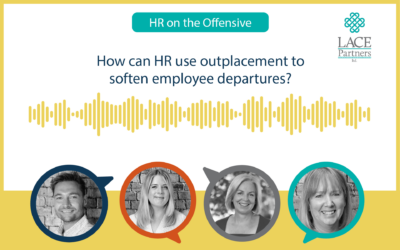In the first of a four-part series of HR Technology blogs, the team at LACE Partners sat down with Executive Director of HR Technology Max Bailey, to talk through how to realise your digital HR people strategy. In this first blog we focus on developing your HR tech roadmap, the beginning of the journey for many businesses. Over the coming months we’ll then look at the subsequent phase of the technology journey underpinning a successful people strategy & HR vision.
Why refresh (or create) your HR technology roadmap
With the turn of the decade and “resolution” of Brexit, stability and growth is returning to the market. We are now in the part of the cycle when organisations are refreshing their HR and people strategy to focus on rapid renewal and growth; their five-year plan of where they want to be as an organisation by 2025.
Your people strategy and HR vision will likely include the need to optimise cost alongside aspirations to exploit new digital, cloud and intelligent capabilities to empower the workforce, line managers and HR to achieve their target outcomes. All while providing a step change to the employee experience to make you more attractive to candidates.
The rapid acceleration of new intelligent systems means your roadmap should consider the newer edge capabilities promised by technologies such as blockchain and machine learning as well as your existing capabilities (those you already have and those you have but haven’t previously exploited). Determining the capabilities which are right for your organisation and sequencing these in a logical plan which allows a realistic timeframe for implementation whilst being agile can be a daunting and complex task. Some capabilities lend themselves to rapid agile implementations whilst others still require a longer more structured approach. For example, your core people platform and payroll, need to be protected to support daily business operations.
The key question you need to be asking yourself is “how do I get to my vision in a logical set of projects that can be executed in an efficient and effective timeframe?”
The answer is your HR Technology roadmap. It is the plan of how you will realise the people technology enablement vision for your business. It provides a structured set of interventions and projects to execute the desired organisational and technical change defined in your people strategy. It needs to cover not just the technology and associated infrastructure plumbing for your end-to-end solution (unfortunately still required in the Cloud), but also the data process and operating model pre-work required to fully exploit the capabilities you are implementing.
Many clients we have spoken to have issues with their current platform which are related to how they have configured the platform rather than its capabilities. This leads you to another key consideration, “do I optimise my current platform, or can I make it work for me?”.
The “theme” of your technology roadmap
Depending on your starting point (your “as-is” state) you will have different sets of decisions influencing your roadmap. For example, if you currently have multiple systems for the same capability (e.g. core HR) then your roadmap is likely to include a degree of consolidation of systems. If on the other hand you currently have a single platform for core HR the discussion will be about upgrading, moving to the cloud, or ‘sweating the current asset’ while implementing and exploiting new capabilities in parallel.
We typically see three “themes” in an HR technology roadmap:
- Consolidation and onboarding to a single platform
- Implementing and exploiting new capabilities, particularly for employee experience
- Replacing your core HR and Payroll system
A typical five-year HR technology roadmap will include aspects of each of these themes with an emphasis on one of them, determined by your starting point, budget and the aspirations of your people strategy & HR vision.
Design principles
An agreed set of design principles (often called ‘guiding principles’) will help keep your roadmap aligned with the aspirations of your people strategy & HR vision. These are used to shape and influence the capabilities you prioritise as well as informing your architectural decisions. Typical principles relate to data, security, employee experience (e.g. single sign-on, look and feel) and often include commercial and organisational principles related to vendor ELA’s, standards (e.g. API’s, Cloud First) and what other functions are planning; For HR, one common reference point is ‘what is finance planning’? Your Enterprise Architect should have a minimum set of design principles for you to consider. Engaging your organisation’s Enterprise Architect early in your roadmap process will also help you navigate the complexities of your IT and standards governance.
Best of breed “new tech”
Best of breed and “new tech” are often used terms describing the latest capabilities which have not yet been added to the major Tier 1 platforms. They provide opportunities to add differentiation to your landscape to provide specific new capabilities for your workforce before they become mainstream, potentially providing you competitive advantage. For example, differentiation of the candidate experience in the talent acquisition process. In the world of Cloud, such point solutions can typically be implemented quickly when compared to the major “infrastructural” projects required to replace your HR system of record and Payroll.
Capabilities not products
Structure your roadmap around the new capabilities you want to introduce, prioritise by your pain points and priority aspirations. With the plethora of technologies available and the speed the platforms are evolving and converging, you will have multiple options to deliver most capabilities. This gives you a degree of flexibility in your thinking, whilst using your design principles to limit the potential products to avoid being overwhelmed.
We recommend categorising your desired capabilities as “mature” or “new tech”. Our approach drives you to consider an end to end single platform for the mature capabilities (simplifying implementation and integration with a more consistent look and feel, and better commercial leverage) and limiting ”new tech” for point solutions either not yet available in the end to end products, or which you need to implement now as a stand-alone point solution. This approach simplifies the target technology and vendor landscape, reducing the number of different skills you will need post implementation and simplifying continuous improvement and release management in BAU operations.
Where possible, be flexible in product selection timing for each capability based on where it appears in your roadmap. For example, why select a new case management system now if you are not planning to implement it for two to three years? Engage your procurement function in your product and vendor selection process to seek guidance on getting the best deal.
Business case
With unlimited resources (people, time, money) developing your roadmap would be easy, but unfortunately that is rarely reality! A strong business case to underpin the investments required will be needed – a combination of cost reduction, cost avoidance and improved revenue linked directly to each intervention and project in your roadmap.
Presenting the expected benefits of your project against your current baseline performance will allow your investment governance forums to compare the benefits of your projects against those of other functions seeking to transform. Show how your initiatives will benefit the organisation with tangible and intangible benefits linked to your people strategy & HR vision. Try to articulate the business case as a simple elevator pitch. If the logic of the case isn’t clear and concise you run the risk of losing the message. Each new or refreshed capability will typically have a different business case lever so watch for double counting and overlaps to avoid confusion in the math. If you don’t find the errors, I am sure the Finance Team will!
Vendor and Implementation Partner Selection – The Next Step
Once your budgets are approved your next step will be the selection of the specific software vendors for each of your in-scope capabilities and where necessary system integrators (SI) to configure them for your specific needs and integrate them into your broader IT estate. Our next blog looks at our approach for optimising the selection of software vendors and implementation partners.
If you’d like to discuss your tech roadmap options with Max or any member of his team then feel free to reach out him or contact LACE Partners on +44 (0) 20 8065 0310.









